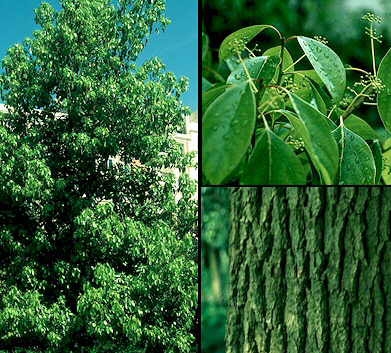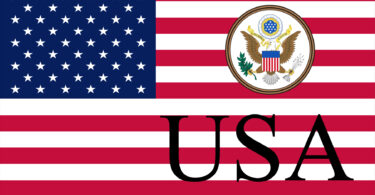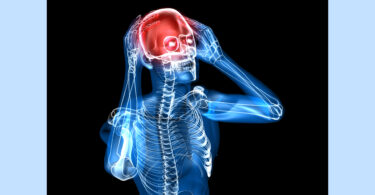A few weeks before the big Christchurch earthquake, I was walking in the botanical gardens during a break from a course I was attending. I was very excited to recognise and say hello to many of the trees used in the preparation of Gemmotherapic remedies, being flabbergasted at seeing most of them regrouped in one single garden. As I came close to the Peace Bell, I was somehow attracted to a small bush with shiny waxy leaves; at first I did not see its label and did not recognise it, but as I passed by and continued to walk, I felt compelled to come back, again and again, until I finally saw the information at the foot of this little tree. It is a sapling of the camphor tree that survived the atomic bombing of Hiroshima. “What a powerful tree”, I thought, “being able to survive the blast and the irradiation, and here it is alive and well, with no problems, no growths, and no deformities”. I then realised, or imagined, there was a reason I was attracted to this tree. We know the remedy Camphora, either as a homeopathic one or an herbal one, but the remedy/drug is made from the extract of the tree; here I was standing in front of the plant itself, which presented one more especially important characteristic: the ability to survive in general, the ability to survive intense trauma, and the ability to survive intense radiation. We certainly could use a remedy with those characteristics!
A small branch was hanging down, recently broken as there was still wet sap on the break, so I took four fresh leaves from that broken branch, with thanks to the tree, dried them and brought them to the Simillimum Pharmacy to be triturated (not tinctured as trituration will keep the totality of the leaves’ energy) and made into a remedy.
The Camphor Tree
Cinnamomum camphora is commonly known as Camphor tree, Camphorwood or camphor laurel; it is a large evergreen tree that grows up to 20-30 meters tall. It belongs to the Magnolianae group like Aristolochia, Asarum, Cinnamomum Ceylanicum, Myristica and Nux Moschata, which are known to homeopaths.
|
Botanical classification |
|
|
Kingdom |
Plantae |
|
Division |
Magnoliophyta |
|
Class |
Magnoliopsida |
|
Order |
Laurales |
|
Family |
Lauraceae |
|
Genus |
Cinamomum |
|
Species |
Camphora |
|
Cinnamomum camphora |
|
From the Japan Times Online: “However, camphor trees are not only long-lived, but they are also astonishingly vigorous and capable of surviving even the worst that man can throw at them. A specimen at the Sanno Shrine in Nagasaki was designated a natural monument by that city on Feb. 15, 1969, because it had survived the U.S. atomic bombing of Aug. 9, 1945. Then, on Nov. 3, 1973, the camphor tree was made the official tree of Hiroshima to commemorate those trees that not only survived the U.S. atomic bombing of the city on Aug. 6, 1945, but then recovered quickly and gave inspiration to the people trying to rebuild their lives”.
Medicinal properties of camphor, non homeopathic.
Here is an extract of the herbal uses as reported by Henriette Kress on her website www.henriettesherbal.com, with permission and thanks: “Action, Medical Uses, and Dosage.—In large doses camphor is a narcotic and irritant; in small ones, sedative, anodyne, antispasmodic, diaphoretic, and antihelminthic. Very small doses stimulate and large doses depress. Large doses cause oesophageal and gastric pain, vomiting, slow and enfeebled and subsequently intermittent pulse, dizziness, drowsiness, dimness of sight, pallid, cold skin, muscular weakness, cyanosis, spasms, muscular rigidity, and convulsions. Several deaths have resulted from its use, other circumstances contributing somewhat to the fatal issue, but cases of death in a healthy individual have been reported. Mental confusion may follow its excessive use. Its effects in small doses are transient, but are not followed by depression or exhaustion. It exerts an influence on the brain and nervous system, exhilarating and relieving pain, is an excitant to the vascular system, and irritates mucous tissues which are in proximity with it. When given in the solid form, it is capable of producing ulceration of the gastric mucous membrane. It is used to allay nervous excitement, subdue pain, arrest spasm, and sometimes to induce sleep. In the delirium, watchfulness, tremors, and starting of the tendons in typhoid conditions, it is of much utility as a nervo-stimulant”. Quite similar to the homeopathic uses.
Ayurvedic medicine also uses the extract. From the website Ayushveda.com: “It is indicated in all disease that involves the three dosha, i.e. vata, pitta and kapha. It is a very good pain reliever. It is very effective in convulsions and respiratory disorders. It removes bad odor from the mouth. It improves the taste of the mouth. It stimulates heart and improves blood circulation. It first vaso-dilates the arteries and afterwards constrict them. It has a good role in respiratory system as it helps in expelling extra amounts of mucus in the respiratory tract. It improves the condition of the throat. In increases the urine output. It also works as an aphrodisiac agent when given in calculated amounts. It also increases perspiration. It works as an antipyretic agent, hence it decreases the body temperature. The main indication of camphor is in skin infections and fungal invasion on the body- thus it acts as an anti fungal agent”.
Conventional medicine does not use camphor any more due to its potential toxicity: nausea, vomiting, colic, headache, dizziness, feeling of warmth, delirium, muscular twitching, epileptiform convulsions, depression of central nervous system and coma. It was formerly used locally as a mild analgesic in fibrositis and neuralgia and in injections as a circulatory and respiratory stimulant. It is still found in essential oils preparations like Vicks VapoRub and others.
The Homeopathic Camphor
Homeopathic Camphor is well known….or so we think……All the provings have been done with camphor the extract, the drug, not with the tincture, leaves or bark from the tree. Yet Sankaran uses those provings and the rubrics coming from them in his book “An Insight into Plants” as being totally related to the tree. It seems to me that would be the same as using a proving of Aspirin and using the rubrics to find and prescribe Salix Alba….siblings, cousins, family but definitely not twins.
In the Materia Medica Pura, Hahnemann sees Camphora as a kind of universal antidote to the action of drugs: “In its curative action camphor is just as puzzling and wonderful, for it removes the violent effects of very many, extremely different, vegetable medicines (and even those of the animal drug cantharides and of many mineral and metallic drugs), and hence it must have a sort of general pathological action, which, however, we are unable to indicate by any general expression. Camphor, as I can testify from experience, removes the too violent action of very many drugs, whether unsuitably employed or given in too large doses, but generally only in the primary action, as a kind of contrarium, as a palliative. For this purpose it must be given very frequently, but in very small doses, when requisite every five to fifteen minutes, or when there is great urgency every two or three minutes, about one drop of the saturated alcoholic solution (one eighths of a grain) shaken up in half an ounce of water until dissolved, or by means of olfaction of a saturated alcoholic solution of camphor every three, four, six, ten, or fifteen minutes”. Hence probably the origin of the use of Camphora to remove the effects of aggravations of remedies.
Interestingly Clarke gives “Shock from injury” as one of the causations, yet very few, if any at all of the authors who recommend remedies based on causes and on clinical grounds write about the use of Camphora. Yet the picture of shock we are all familiar with matches often the situation after accidents and physical injuries, not only cholera and infectious diseases.
In “An Insight into Plants” page 593, Sankaran writes about the Magnolianae:
“Sensations and Reactions: The common sensation of Magnolianae, therefore, seems to be confused, bewildered, beclouded and strange. And because the outside is so bewildering, puzzling and confusing she feels isolated and not part of life around her, and she reacts to this by withdrawal.” This not very far from the description of Post Traumatic Shock Syndrome (PTSD).
So what is my point?
I will be the first to say that the Camphor Tree leaves need a full proving and that it needs to be compared to the known materia medica of the remedy Camphora.
Here are some symptoms of radiation sickness: Bleeding from the nose, mouth, gums, and rectum, bloody stool, bruising, dehydration, diarrhoea, fainting, fatigue, hair loss, inflammation, mouth ulcers, nausea and vomiting, open sores of the skin, skin burns, sloughing of the skin, ulcers (oesophagus, stomach, intestines), weakness….. very similar to those found in the different materia medicas about Camphora.
Add to that the shock symptoms, the very causation of a Camphora state, the fact that the tree survived an extremely intense mechanical blast and an extremely intense amount of radiation; it seems to me that we can safely extend the indications of Cinnamomum Camphora Hiroshimae Christchurch as follows:
PTSD
Any state, acute or chronic, after a serious injury, even if there are no real apparent clinical symptoms
Post irradiation and post chemotherapy, with or without apparent clinical symptoms
As a prevention treatment before radiation therapy or chemotherapy.
The remedy will be prepared by the Simillimum Pharmacy in Wellington and be available by the time of publication.






